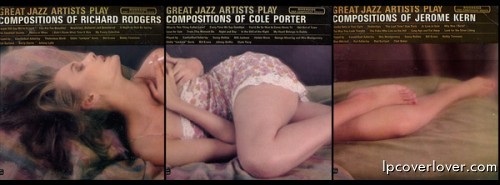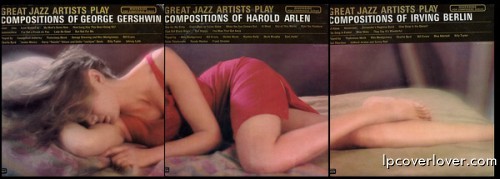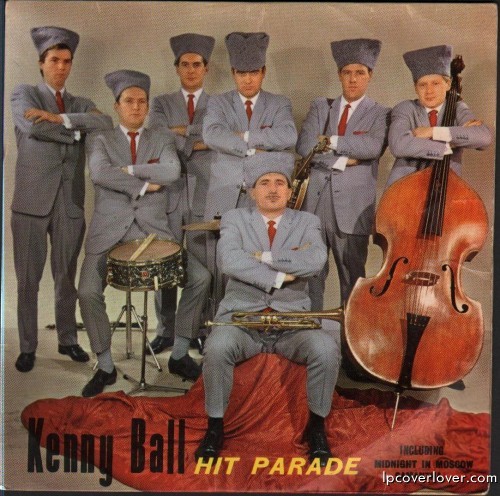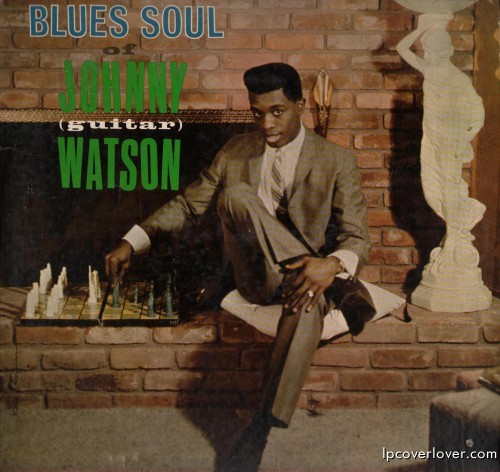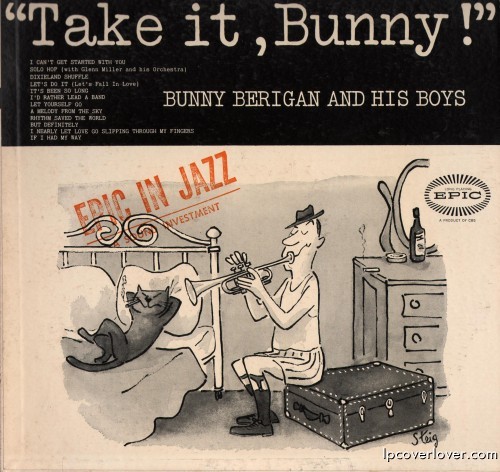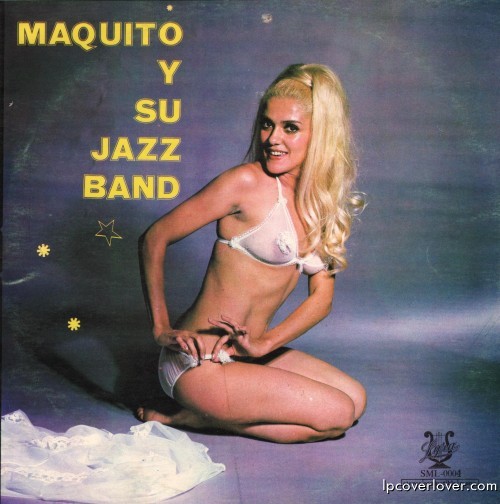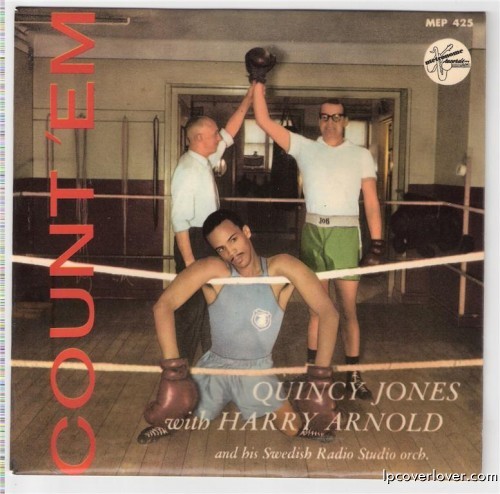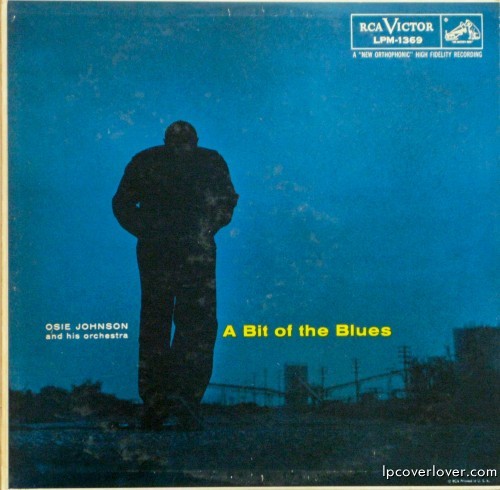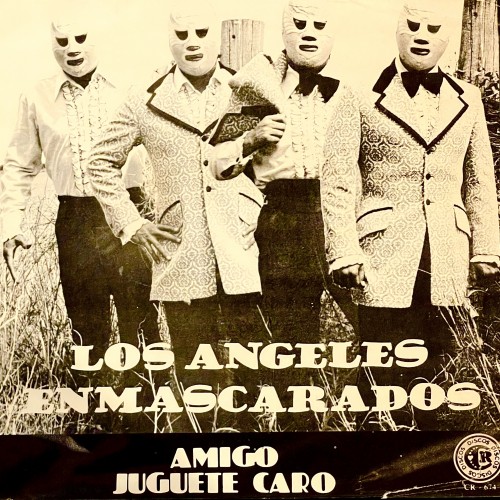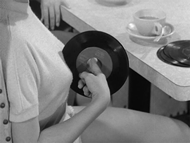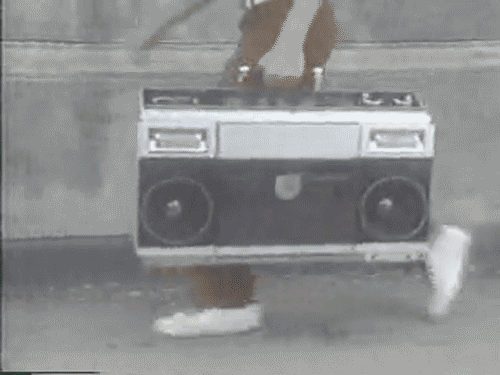Search Results
Your search for jazz cover returned the following results.
Beautiful music
In the early 60’s Riverside Records put together two beautiful pin-up puzzles filled with some of Jazz’s greatest musicians playing songs from the American Songbook. Six records of the music of Richard Rodgers, Cole Porter, Jerome Kern (top) and George Gershwin, Harold Arlen and Irving Berlin (bottom) interpreted by Thelonious Monk, Bill Evans, Cannonball Adderley, Sonny Rollins. Wes Montgomery, Blue Mitchell and on and on. Having these six records would be a fine foundation for any collection. And look at these women – moanin’, rollin’, writhin’, groovin’ and movin’ with the music!
Bad move
“Blues Soul” of Johnny (guitar) Watson Chess Records (1964) One of the funkiest guitar players of all time, the legendary, original “gangster of love” here plays piano and sings standards in this jazz trio album that’s not too soulful or bluesy — Witchcraft/I Cried For You/I’ll Remember April/Polka Dots And Moonbeams//Exactly Like You/When Did You Leave Heaven/Reconsider Baby/Misty
An oddball release that doesn’t do credit to his talent (or the great Chess label catalog). This came out during a lull in his long career – after the great 50’s releases (“Gangster of Love”, “Hot Little Mama”, “Those Lonely, Lonely Nights”) and before his 70’s comeback (“A Real Motha for Ya”, “Ain’t That A Bitch”, “Superman Lover”).
Ol’ dirty bastard
Lowell Fulsom “Tramp” Kent Records (1967) (1921 – 1999) Check out both Fulsom’s Tramp and the Joe Tex response “Papa Was Too” (Sampled by Wu-Tang Clan).
A major figure in West Coast blues, Fulson (sometimes listed as Fulsom) took the smooth, jazz-tinged jump-blues of Texas to California, where he had rhythm-and-blues hits from the 1940s to the 60s. He wrote songs that were also recorded by Elvis Presley (“Reconsider Baby”), Otis Redding and Carla Thomas (“Tramp”) and B.B. King (“Three O’Clock Blues”). He was a member of the Blues Hall of Fame and the Rhythm-and-Blues Hall of Fame.
Fulson was born in 1921 on a Choctaw Indian reservation in Oklahoma; his grandfather was a Choctaw. Fulson played gospel and country music before turning to the blues. In 1939 he replaced Chester Burnett (later known as Howlin’ Wolf) in the band led by the country-blues singer Texas Alexander, who was based in Gainesville, Texas. He served two years in the Navy in Oakland, Calif., and stayed on the West Coast when he began his recording career in 1946.
He had his first rhythm-and-blues hit, “Three O’Clock Blues,” on the Swingtime label in 1948, and went on tour in 1950 with a band that included Ray Charles on piano. Other bands Fulson led would include Ike Turner on guitar and Stanley Turrentine or King Curtis on tenor saxophone. He continued to have hits, including a version of Memphis Slim’s “Nobody Loves Me” that he retitled “Everyday I Have the Blues,” and his own song, “Blue Shadows,” in 1950. Although he lived in California, he began recording for the Chicago- based Checker label (part of Chess Records) in 1954, when he had a hit with “Reconsider Baby.”
He moved in 1964 to Kent Records, recording as Lowell Fulsom, and his soul- styled “Tramp” reached No. 5 on the rhythm-and-blues chart in 1967. He continued to tour and record well into the 1990s, with albums for European labels and, most recently, for the Rounder and Bullseye Blues labels. He won five W.C. Handy blues awards in 1993 and his 1995 album, “Them Update Blues” (Bullseye Blues), was nominated for a Grammy Award for Best Traditional Blues album.
The cat in the flat
“Take it, Bunny!” Bunny Berigan and his Boys Epic Records (1960) Drawn from mono 78s Berigan cut in the ’30s. Bunny Berigan’s heavy drinking and fast-paced lifestyle cut his life short in 1942 when he was only 33 years old, and all told, the swing trumpeter’s recorded legacy doesn’t even span a decade. Still, his incredible range on the instrument and his always beautiful tone have given him a deserved spot as one of the greatest trumpet players in the history of jazz. Illustrated by the great New Yorker cartoonist William Steig!
Personnel and Recording Dates
Solo Hop. Recorded: New York April 25, 1935. Glenri Miller and his Orchestra: Bunny Berigan, Charlie Spivak (trumpet), Jack Jenny, Glenn Miller (trombone), Johnny Mince (clarinet and alto.), Eddie Miller (tenor), Claude Thornhill (piano), Larry Hall (guitar), Delmar Kaplan (bass), Ray Bauduc (drums).
It’s Been So Long, I’d Rather Lead A Band, Let Yourself Go. Recorded: New York, February 24, 1936. Bunny Berigan and his Boys. Bunny Berigan (trumpet), Joe Marsala (clarinet and tenor), Forrest Crawford (tenor), Joe Bushkin (piano), Dave Barbour (guitar), Morton Stuhlmaker (bass), Dave Tough (drums).
A Melody From The Sky, I Can’t Get Started, Rhythm Saved The World. Bunny Berigan and His Boys. Bunny Berigan (trumpet), Forrest Crawford (tenor), Artie Shaw (clarinet
in Melody and Started), Paul Ricci (clarinet in Rhythm) Joe Bushkin (piano), Morton Stuhlmaker (bass), Stanley King (drums).
I Nearly Let Love Go Slipping, But Definitely, If I Had My Way. Recorded : New York June 9, 1936. Bunny Berigan and his Boys. Bunny Berigan (trumpet), Jack Lacey (trombone), Slats Long (clarinet), Joe Bushkin (piano), Eddie Condon (guitar), Morton Stuhlmaker (bass), Cozy Cole (drums).
Dixieland Shuffle, Let’s Do It. Recorded: New York, February 17, 1937. Bunny Berigan and his Orchestra, Bunny Berigan, Henry Greenwald, L. Brown (trumpet), Ford Leary (trombone), Matty Matlock (clarinet), Hymie Schertzer (alto.), Art Drelinger (tenor), Les Burness (piano), Tom Morgan (guitar), Arnold Fishkin (bass), Manny Berger (drums).
He comes out swinging!
“Count ‘Em” Quincy Jones with Harry Arnold and his Swedish Radio Studio Orch. Recorded in Stockholm for Metronome Records (1958) A three-song EP with “Count ‘Em”, “Meet Benny Bailey” (featuring the added trumpet of … Benny Bailey) and “Cherokee” These tracks are also on the LP “Quincy’s Home Again”. Q writes in the notes, “The atmosphere, the warmth, the musicianship and the understanding I found in Sweden certainly make me consider it my spiritual home” Consider in contrast what blacks, including many brilliant jazz artists, were experiencing in their native home America in 1958 and why so many became expatriates in Europe for years. Thanks to Lp cover lover, ULF for another fine contribution.
Give the drummer some
“A Bit of the Blues” Osie Johnson and his orchestra RCA Victor Records (1956) Featuring: Osie Johnson (vocal), Nick Travis (tp), Hal McKusick (as, cl), Al Cohn (ts), Milt Hilton (b), Gus Johnson In the 1950s and the first half of the 1960s, Osie Johnson was one of the most in-demand drummers in New York, making a countless number of recordings and working steadily in the studios. Johnson was a member of Earl Hines’ band during 1951-1953. Stints with Dorothy Donegan and Illinois Jacquet followed before he became a busy session musician, playing and recording with a who’s who of mainstream (including Coleman Hawkins, Dinah Washington, Wes Montgomery, and Sonny Stitt). In addition to contributing tasteful and supportive drums, Osie Johnson was an occasional composer, arranger, and singer, leading sessions for Jazztone (1955) and RCA (1956).

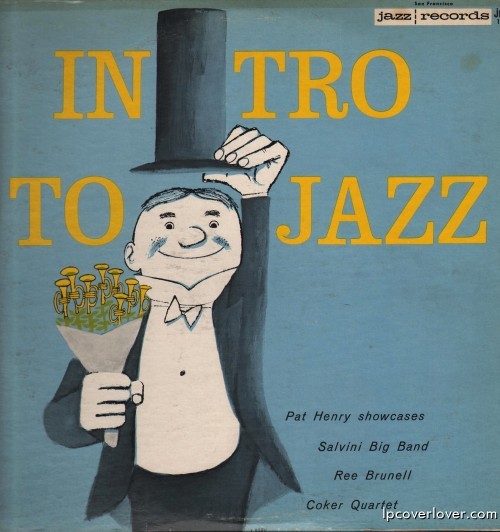


 (37 votes, average: 3.68 out of 5)
(37 votes, average: 3.68 out of 5)